Affiliate disclosure: This post may contain affiliate links. Please see our Privacy Policy.
Mulberries are gaining attention these days in permaculture circles around the world. They’re easy to grow, prolific, and new hardy varieties mean that they can be grown anywhere between zone 4 and 9. Minimal maintenance and large crops make them a great choice for a backyard orchard.
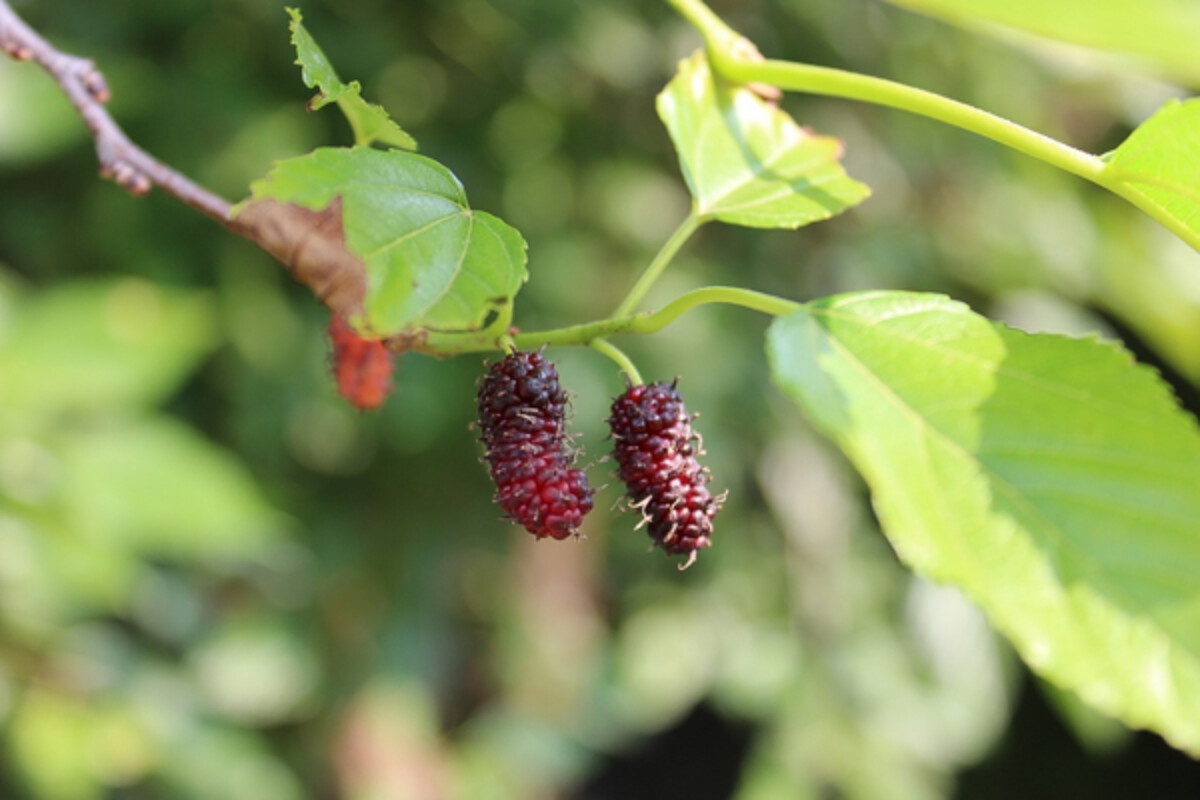
Growing up in southern California (zone 9), fruitless mulberries were one of the very best shade trees. Drought tolerant, they’d grow in the desert where few other trees besides palms could thrive.
When our horses stripped the bark from one of our younger trees, it came back from the rootstock as a fruit-bearing mulberry and I had the chance to try my very first one. That resilient, drought-tolerant rootstock produced truly spectacular fruits.
Now I find myself on the other side of the country, living in zone 4 Vermont, and plant breeders have recently developed a number of cold-hardy mulberry trees. I’m excited once again to be able to pick these rich fruits right off the tree.
Growing Mulberries
Mulberries are small blackberry-like fruits that grow on small to medium-sized trees. While the fruits are somewhat similar to blackberries when ripe, they’re actually not related at all. The small unripe fruits look like some sort of alien lifeform just after pollination, and they don’t really look like berries at all until they’re fully ripe.
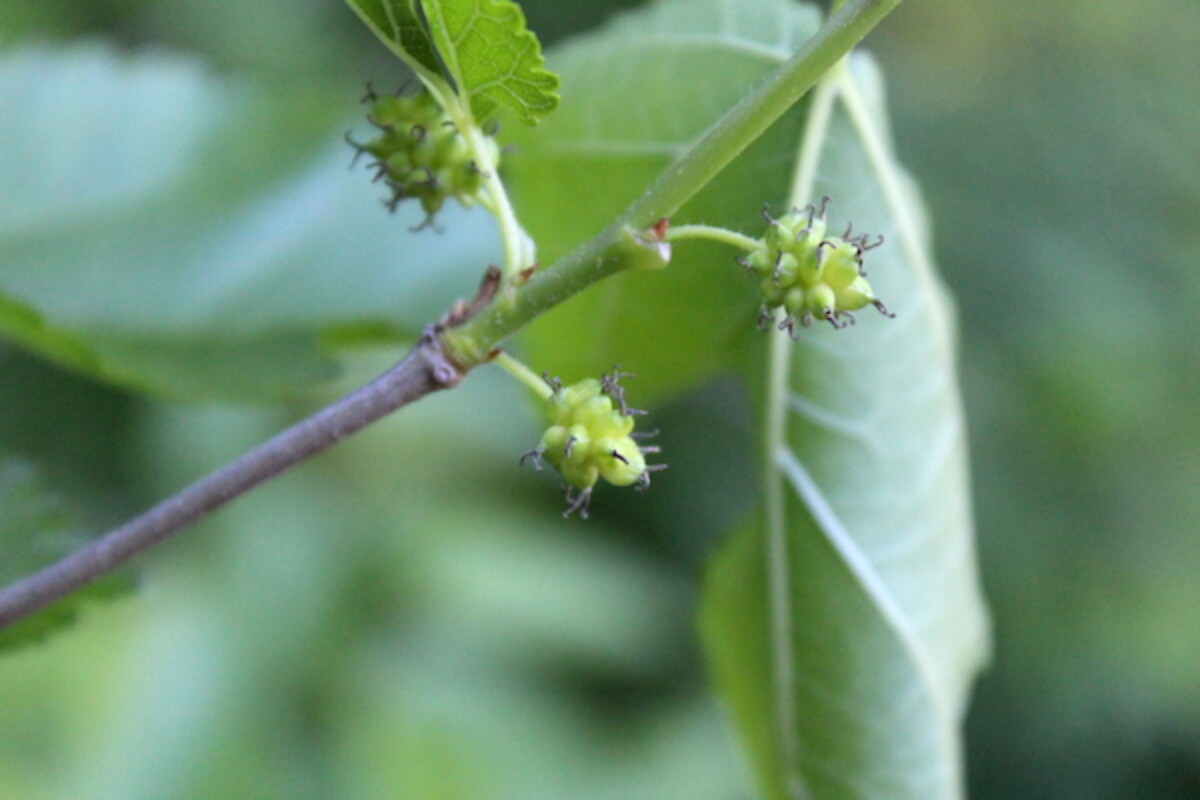
Mulberry trees can be grown from cuttings, grafted or planted from seed. Like many other tree species, including apples, they don’t come true to seed and seedlings will be somewhat different than their parent. Softwood cuttings during the growing season are the most reliable propagation method (here’s how).
Regardless of how the mulberry tree gets started, care is pretty straightforward. Mulberry trees prefer well-drained, fertile soil and they’re generally drought tolerant. For the most part, they’re adaptable trees, but they cannot withstand wet soils.
In the first year of growth, the trees require 1 inch of rain per week and will need to be watered if the weather is persistently dry. Once they’re established they shouldn’t require watering except in the dryest climates.
Plant mulberry trees roughly 25 feet apart. For the first few years, they’ll grow rapidly. Once they reach a height of 25-30 feet tall, growth slows down dramatically but be sure to allow space for that initial growth spurt.
Newly planted trees begin bearing fruit in as little as 2-3 years.
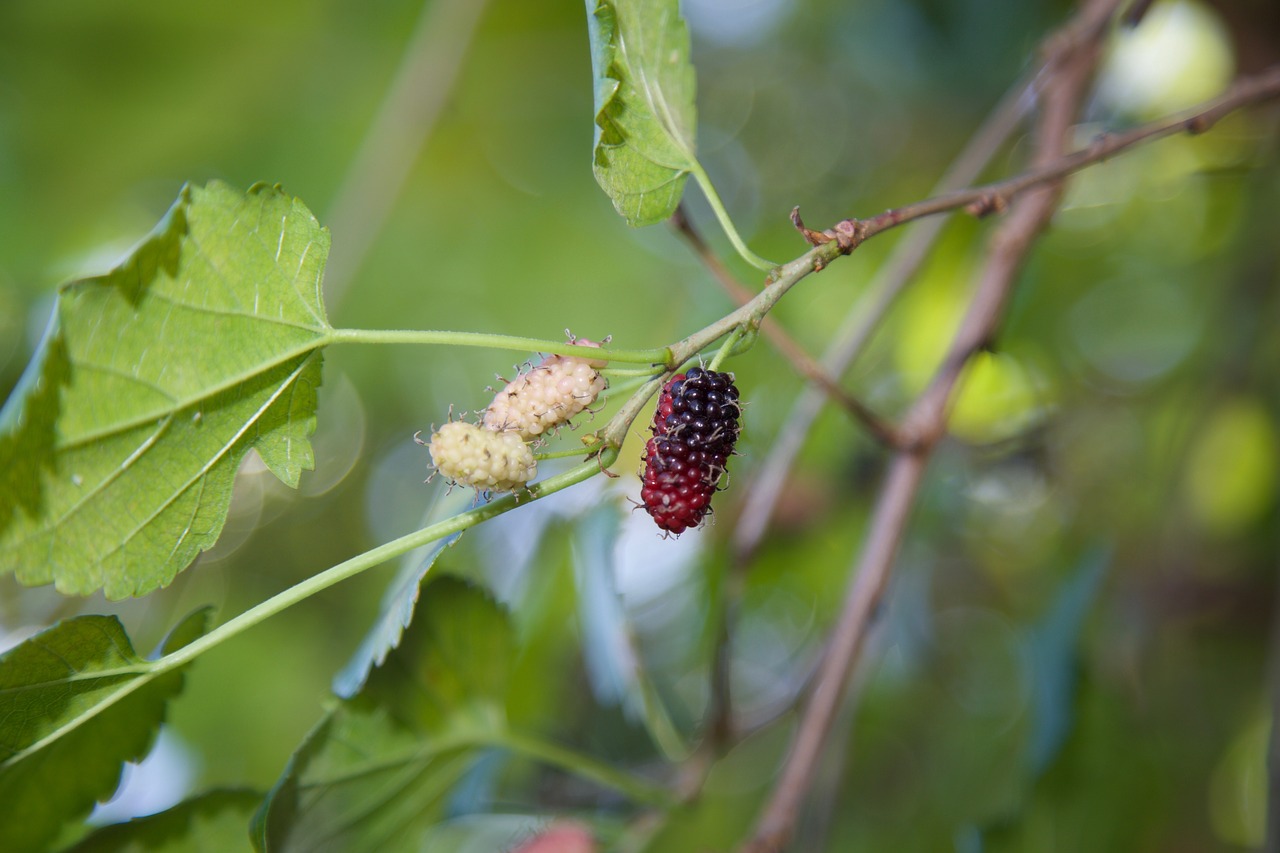
Harvesting Mulberries
Like blackberries and blueberries, mulberry fruits stain, and it’s best to plant them far from common walking areas. Even if you’re diligent with picking, there’s still likely to be a substantial windfall crop, and many people harvest by laying out sheets below the trees.
An old-time permaculture book called Tree Crops: A Permanent Agriculture recommends planting them so that they overhang chicken yards or pig pens. It claims that a single mature tree can produce enough fruit to feed several pigs for at least a month with no supplemental feed during the fruiting period.
That doesn’t sound like rounded forage, but it’s still a great way to supplement and dramatically reduce your feed costs. Rather than thinking about dropped fruit as an inconvenience, think about where a mulberry tree can be planted to add value with any fallen fruit.
Mulberries generally ripen in early summer, with harvests spread out over a full month. Once a tree is mature it can produce between 60 and 100 gallons of fruit, much of which will be harvested by birds.
Still, even excusing large losses to support bird populations, it’s possible to harvest way more than a family can eat from a single tree. In the first few years of growth, crops will obviously be smaller.
Since mulberries are preferred by birds, some farmers actually grow them as decoy crops to protect more valuable market crops. If a scarecrow and bird netting won’t keep birds off your summer fruit, try a mulberry tree instead. Even if you never harvest the mulberries, it’ll improve your harvest of other things around the same time like pie cherries and summer raspberries.
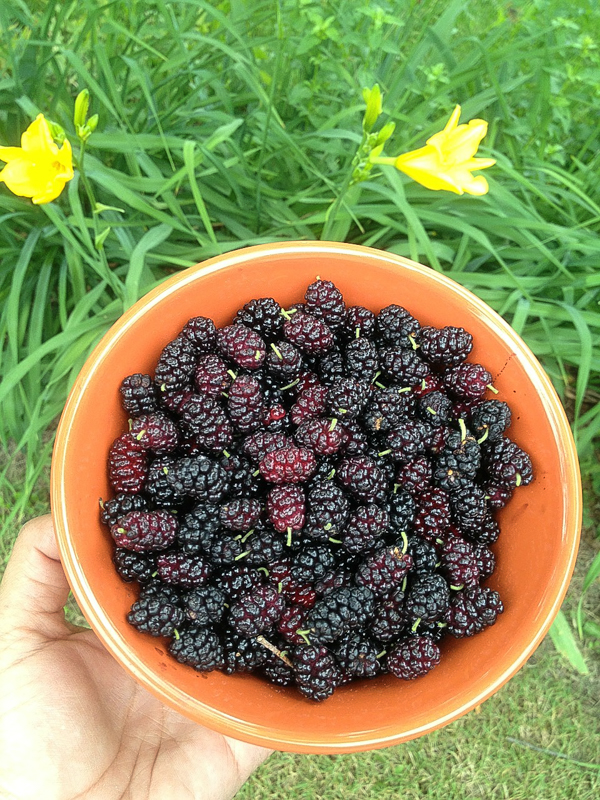
Cold Hardy Mulberries for Zone 4
For many years, just about every variety of mulberry was considered hardy to zone 5 or 6. Relatively recent plant breeding has developed several cold-hardy varieties that seem to grow and fruit well in zone 4. If you’re in a warmer zone, there are dozens of varieties to choose from.
Depending on the variety, mulberries are either self-pollinating or require separate male and female trees to produce fruit. Be sure to check on the exact variety and make sure you get a male if necessary. Up here in the north country (zone 4), all the cold-hardy mulberry varieties I know of are self-fruitful.
- Illinois Everbearing Mulberry – The most commonly available variety of hardy mulberry. Fruit ripens slowly over a long period, sometimes as long as 3 months. Heavy crops of sweet fruit annually and hardy to -25 F.
- Northrop Mulberry – Sweet fruited and hardy.
- Viola’s Lavender Mulberry – The product of a chance seedling in Southern Indiana. Has a light lavender-colored fruit that is supposedly less staining than darker colored varieties. One of the earliest ripening cultivars. Self Fertile and hardy to zone 4.
- Collier Mulberry – An early fruiting hardy mulberry variety.
- Kokuso Mulberry – A Korean variety with wonderful fruit flavor. Fruits ripen early and over a relatively long season.
- Gerardi Mulberry – A natural dwarf, trees say under 6′ tall making them perfect for the backyard grower. Ripens over a period of 4-5 weeks. Space trees 6 to 10 feet apart. Self Fertile.
- David Smith Everbearing Mulberry – Trees originate in Oxnard, NY and are hardy to zone 4, producing heavy crops of berries. Said to be more compact than many varieties.
There are three more varieties I can find that are supposedly hardy to zone 4, but there’s little specific information about each cultivar. Those include Russian #1, Lawson Dawson Mulberry, St. James Mulberry and Oscar’s Mulberry.
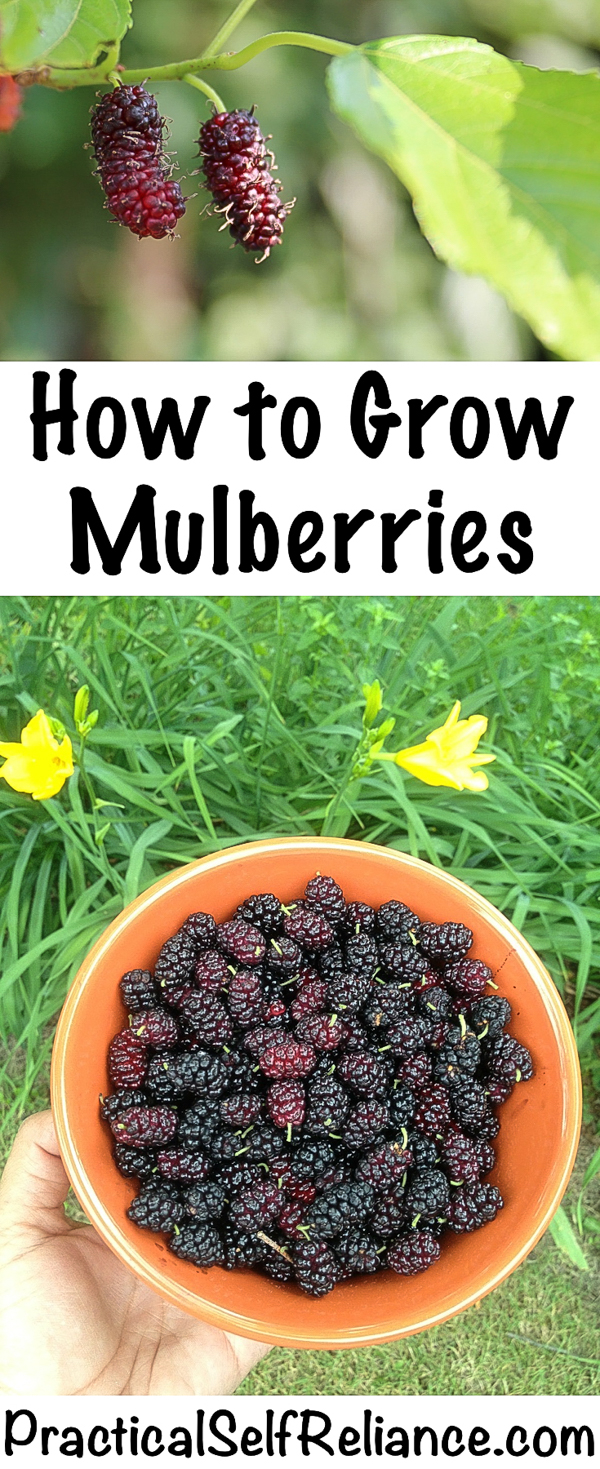

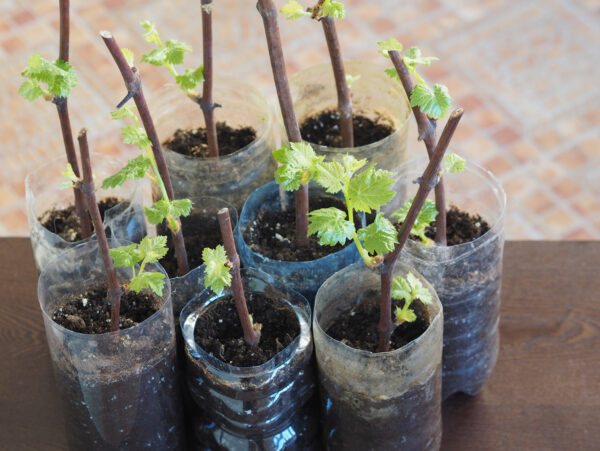
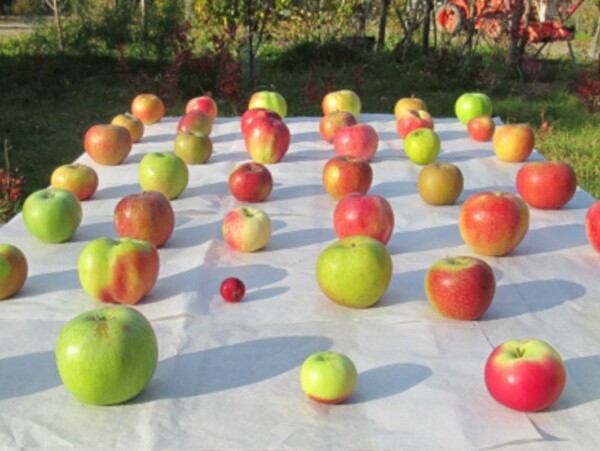
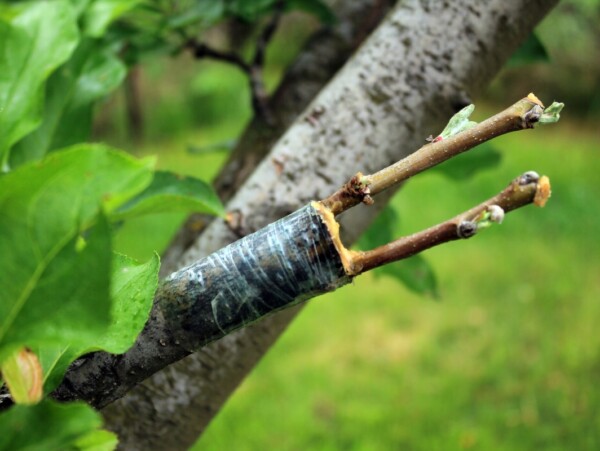










That’s what I’ve been doing, too. Thanks again for all of the thorough information and answers. You’re a gem!
You’re very welcome.
I have four mulberries; two are just called dwarf…although I think that they will be 15’+ if left to grow as they wanted, and the other two are Gerardi. They were planted at the same time, but one of the Gerardis has not produced any fruit while the other one has…absolutely delicious. I’m hoping that it just needs another year and it isn’t a male/female thing. Those two are already at least six feet in height. When things decide to grow here, they really go for it! (Addison County, VT)
Originally, I had planted all four out front, but then I remembered reading about how the roots can be quite destructive, so I contacted Stark’s and they thought it best that I move them, even though they all are dwarf. I just wanted people to consider that should they decide to plant one. Avoid putting it near foundations, driveways, sidewalks or septic systems. Out front, they would have been near the last three; out back, the roots can run rampant! So glad I moved them. They had been in the ground for a year, but they never seemed to suffer from the move.
Here’s a silly question–when I pick them, there is always a little stem that comes off with the berry. Do you eat them or bite if off at that point?!
The stems are actually edible so you can leave them on if you’re wanting to use them in something like a smoothie where you won’t notice it. If you’re putting them in something like baked goods, then you will definitely want to snip the stem off. This can definitely be time consuming. But most people generally don’t want little stems in their baked goods. If you’re just eating them fresh then it’s totally a personally preference. I usually just hold it by the stem and eat up to it.
I’ve got some mulberry rated for zone 4. The larger 5 ft trees I’ve had in the ground for a third winter.
Last year I purchased some younger smaller plants and I’m just not sure when or if I can move from pot to the ground with protection.
They range from 6 inch cuttings to 2ft plants without thick bark.
The best time to plant mulberry trees are in the cool spring or the fall.
My mulberry tree only seems to produce fruit once every 3 years. When it does swarms of flies come with it. I’m ready to cut it down. It’s the only tree in my yard! I’ll be so sad to cut it down but the flies ruin the yard. We can’t even go outside. I live in chicago.
Are you getting blossoms every year and no fruit or no blossoms at all during the years when it doesn’t fruit.
Can you tell me where I might be able to find some of the mulberry varieties that would grow here in NY/zone 4?
Burnt ridge nursery, St. Lawrenence nursery and Fedco all have cultivars that are hardy in zone 4, and all ship bare root trees in the spring. There are likely other places too, but those are the ones I know off the top of my head.
We have a huge mulberry tree in our yard. We get occasional volunteers from birds, no doubt, that we mow down in the grass because we just don’t have room for another tree. We never, ever get the fruit; it all goes to the birds and te branches are naturally too high.
I understand, though, that the idea of the “mulberry bush” comes from appropriate pruning and training of young trees so they don’t become giants. I plan on trying that with the next volunteers I find. I just hope it doesn’t attract monkeys or weasels to the garden 🙂
I heard it’s possible to use Mulberry leaves for tea. Can you tell me how? I have self seeded white and black mulberry trees. The birds eat the fruit, since I feed the birds anyway. Leaves is all I have left.
I’d honestly never heard of that, but I just googled it and apparently it is a thing that you can buy online, but I have no idea how it tastes (or if it’s medicinal or just for pleasure drinking). I’d say just try drying the leaves like you would herbs and then steeping them in hot water to make tea (or just steeping them fresh in season). Let me know how it goes!
Hi Ashley,
In the beginning of creating edible landscapes on my small lot in Northeastern Vermont…Where do you recommend purchasing a Geraldi dwarf Mulberry tree??
Local to Vermont, I’d try A Perfect Circle Farm in Berlin, VT. They have all manner of unique hardy edibles. For mail order, try raintree nursery or fedco trees.
Thank you for those sources! I’m in northern Ny, on the border of Ontario (not far from St. Lawrence Nursery). I’ve had the hardest time finding zone 3/4 hardy cultivars. Very excited to find another nursery that is specializing in hardy mulberries, and more!
You’re very welcome.
My mulberries accrue little, barely visible mite-like insects unfortunately. Do you have advice on how to deal with these pests?
Honestly, that’s not a problem I’ve come across, no pests I’ve seen on the mulberries. Good luck!
Dust them with Perma-Guard Organic Diatomaceous Earth. This will kill the mites and it can be eaten without fear. In fact, eating it may give some health benefits.
Glad you have found the delights of mulberries Ashley. We planted two new trees yesterday.
Yes the ripe fruit does stain, but if you squeeze the firm red fruit that is not yet ripe, in your fingers, the juice removes the purple stain of the ripe fruit.
Also, the young leaves are edible. In Laos we had them in tempura batter with honey and lemon dipping sauce.
Wow that’s amazing, I’m going to have to try using underripe berries to remove the stain of ripe ones. And eating the leaves is new to me too. Thanks so much!
Great Read. I first heard of mulberries last year and was able to source a variety that will grow here in Ontario Canada. My 2 trees are taking off and in the first year produced a couple berries that we all savoured.
Nice! That’s great they’re producing so quickly =)
In this article (towards the bottom), where you write “Up here in the north country (zone 4), all the cold-hardy mulberry varieties I know of are self-fruitful” you then go on to list several cold hardy varieties, and the dwarf Gerardi Mulberry tree is listed among them. I’m looking for this tree (I live in Great Falls Montana, Zone 4) and I can’t find it sold anywhere as a zone 4 tree. Where did you find this specific dwarf Mulberry tree variety being sold or advertised as being cold hardy to zone 4? PLEASE HELP!! I’d really like to grow one.